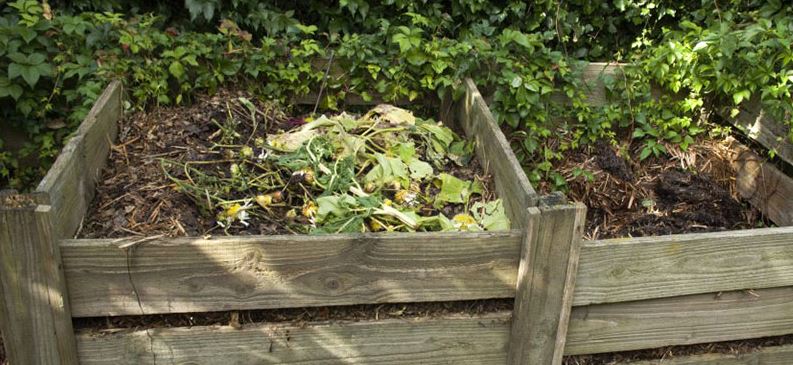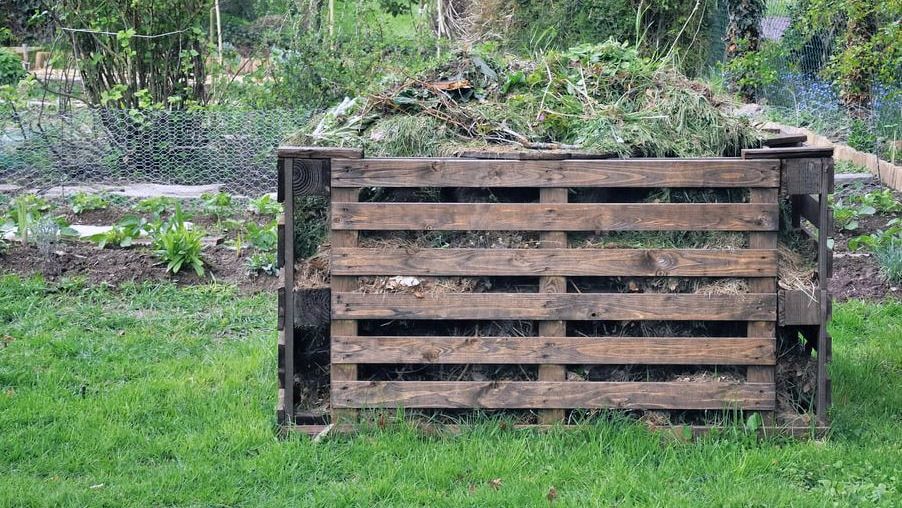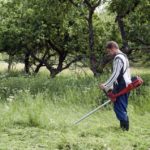Compost: what is it?
During composting, animal and plant materials decompose and then restructure to form a product rich in humus. This assumes a balance between several elements.
First equilibrium: between the humidity of the pile and its aeration. Full of water, the pile putrefies; too dry, fungi (greyish or whitish filaments) develop at the expense of bacteria.
Second equilibrium: between elements rich in carbon (C) and those rich in nitrogen (N). The former must dominate since a good balance is in a ratio C / N of 20 to 30. To obtain these balances, we must ensure the distribution of basic materials: the most different must compensate themselves by mixing.
In the good manure, straw (carbonaceous – dry) is mixed with animal dung (nitrogenous, rich in water).
If you have materials that are too dry: moisten them gradually until they enter fermentation. The use of manure (plant or animal) will bring both water and nitrogen.
If you have products that are too thin and / or too wet (mowing, manure with little mulch): add coarse products and facilitate the evacuation of excess water.
How to proceed ?

For small quantities, the simplest is the compost silo, cylindrical or cubic *. The walls must let in the air. A very simple silo, with pallets of recovery (approximately 1 m on 1 m). With three pallets, you will build in a few minutes the three sides of a well ventilated silo that you will only have to load in front.
* Some municipalities or communities of communes even distribute compost bins to reduce the quantities to be treated, and avoid that green waste is mixed with others. Inquire at the town hall (cleaning service or green space service).
For large quantities of composting material, it will be worth better make a triangular pile.
It will have a width of 1.20 to 1.50 m on the ground for a height of 1 m approximately, this dimension allowing a homogeneous evolution. This on the length you want.
After a few days, the pile must start to heat up. If it overheats (over 60 ° C), stir it by adding carbonaceous material. If it remains cold, you can restart fermentation by remixing nitrogen-rich materials. This warm-up phase lasts a few days to a few weeks. To accelerate maturation, restart it by stirring and redoing the pile. It is after this warm phase that the earthworms multiply.
The compost is then half-ripe, the starting materials are browned, but recognizable. Gradually, it will take a lumpy consistency and homogeneous. It is at this stage that it must be used. Do not wait too long to make your compost …
When the cold sets in, the micro-organisms slow down and the maturation can not begin in good conditions.
Can we use compost activators?
There are two kinds
- Chemical cocktails designed to accelerate the decomposition of organic matter (ammonium sulphate …): they have a negative effect on living organisms and will give a compost quite poor in microorganisms.
- Other products aim, on the contrary, to stimulate biological processes through several kinds of components (trace elements, bacterial preparations, algae or plant purines ….
Tip: You can activate your compost by including a good amount of fresh comfrey or nettle.
The different materials that can be used to compost
Low in carbon and high in nitrogen:
- Tender plants: green manure, mowing grass, ortiey comfrey, cabbage
- Domestic waste: peelings, tops (tomatoes, carrots …),
- Animal products: droppings, droppings ".
Of average composition (carbon / nitrogen = 25 to 30):
- Manure, tender leaves (ash, alder), weeds.
Rich in carbon and low in nitrogen :
- straws (cereals, hard leaves (oak, birch, maple)
- Sawdust and fine chips, (crushed bush, ferns, broom, small wood, bark,
Warning : the wood must only return in a small proportion in the compost, whatever its form sawdust, chips, bark …
Read also :









